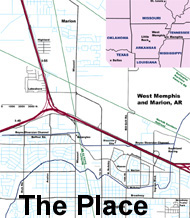
 |
 |
 |
 |
 |
 |
 |
![]()
|
Lividity and the Place of Death
Livor mortis (also called lividity) is the pooling of blood due to gravity. For example, if a corpse is lying on its stomach, given time, you will find the "bruise-like" discoloration of livor mortis on the front side of the deceased. Livor mortis can only occur after death: if the blood is circulating it does not pool. It has a time frame to its appearance. From The Encyclopedia of Forensic Sciences (2000, First Edition, Elsevier Ltd. publisher): "Lividity often becomes perceptible within 3–4 h of death and progressively develops in surface area and colour intensity to attain its maximum degree 8–12 h postmortem. During this early period it is still mobile, i.e. it may be locally displaced by thumb pressure on the skin, or it can move (partly or completely) to other regions of the corpse if the body position is altered. After 12–15 h, postmortem hypostasis becomes ‘fixed’ and thus can no longer be displaced by external action. It will then remain unchanged until masked by the generally darker discoloration resulting from putrefaction." In the second edition of The Encyclopedia of Forensic Sciences (2013), the timeline is extended, "Although livor mortis is commonly seen between 2 and 4 h postmortem, its onset may begin in the 'early' period, as little as 30 min postmortem." This may have come from early reviews of lividity and 30 minutes to the appearance of minor signs is stated in Adelson in 1952. The terms "onset" and barely visible point to little lividity appearing until an hour or hours after death. The victims were found in what could be described as a creek or a ditch. Detective Bryn Ridge estimated that the water was 28 to 30 inches deep. Michael Moore was the first body taken from the water, at 2:45 pm on May 6, 1993 with the other two shortly thereafter. The victims were placed on the banks of the creek with Moore on the east bank near where he was discovered, and Branch and Byers on the west bank near where they were discovered. The coroner Kent Hale arrived at the scene at 3:55 pm and soon thereafter pronounced the victims dead. He made the following notes based on his examination at the crime scene regarding lividity. (The medical examiner, Dr. Frank Peretti's autopsy notes are appended.) Moore "Body lying on side lividity in buttocks and back will blanch with pressure." AND "Lividity Present: [YES is circled] Blanches with pressure" AND "Lividity will blanche with pressure" Peretti added at autopsy: "Lividity was present, minimal and fixed on the posterior surface of the body except in areas exposed to pressure." Branch "Lividity in left buttocks and back will blanch with pressure." AND "Lividity Present: [YES is circled] Will blanch with pressure" AND "Lividity will blanch with pressure." Peretti added at autopsy: "Lividity was present, minimal and fixed on the anterior posterior surfaces of the body." [Uniquely, Branch had lividity on the left side of buttocks and back] Byers "Lividity in buttocks and back will blanch with pressure" AND "Lividity Present: [YES is circled] Blanches with pressure" AND "Lividity will blanch with pressure." Peretti added at autopsy: "The body was pale with minimal posterior fixed lividity." At the Echols/Baldwin trial, Dr. Peretti used the timing of lividity to make a pronouncement of time of death. With the lividity tested at 4 p.m., and with the lividity blanching with pressure (not fixed), he counted back in time to say that the victims were killed between 1 a.m. and 7 a.m.* This in rough accordance to the times provided in the above excerpts from the Encyclopedia of Forensic Sciences, a maximum of 15 hours after discovery. This determination contradicted the prosecution's case which had the murders being committed approximately 7 p.m. the previous day. *In subsequent examination, Peretti walked back his time of death to between 1 a.m. to 5 a.m. The prosecution was in the unusual position of bringing in a pathologist, Dr. Duke Jennings, to rebut the medical examiner. Among Dr. Jennings arguments, he testified that all the official sources say that livor mortis is terrible for determining time of death, the cold of water may have delayed lividity and maybe the victims rotated in the water. Although the lividity evidence and its utility in determining the time of death is fascinating, I don't intend to further rehash it here. It is not the main focus of what I have to say. My main point is that the lividity virtually proves that the Blue Beacon Woods could not have been the site of the murders. Lividity and the Place of Death It was Detective Mike Allen who first encountered Michael Moore sunk in the ditch that divides the Blue Beacon Woods. Detective Bryn Ridge took over the grim search in the creek and encountered the other two bodies. According to Ridge's testimony: Prosecutor John Fogleman: Alright now - and you may have testified to this, I may have just missed it. You indicated that Michael Moore was on his left side. How was Stevie Branch? When the victims were taken from the water and laid on the bank, they were placed on their sides. This can be seen in photos of them on the banks and was mentioned in contemporary notes. (It is the policy of my website to not show lurid photos of the victims or their injuries.) Their hands and legs were tied in such a way that their right wrists were tied to their right ankles and their left wrist were tied to the left ankles. The relative shortness of their bindings drew their arms down and bent their legs at the knee. Lividity, as noted above, was found on their backs and buttocks. Unless the children had spent time, after death, lying on their backs, this would have been impossible to happen. Let's look at the sequence of this. First, the children were killed. They would then need to spend time (2 hours?) on their backs for more than minimal lividity to form. They would have to have been placed face down in the water (Byers and Branch) or on his left side (Moore). From the autopsies as presented at the time of the trials, two children were determined to be drowned. A subsequent defense analysis extended this to all three. Regardless of whether it was two or three who were drowned, the Blue Beacon Woods could not have been the site. For the Blue Beacon Woods to be the site, the following sequence would have had to have happened:
The above scenario is ludicrous. Therefore the victims did not die in the Blue Beacon Woods. Edit: 5/13/2021: No note of secondary lividity on the front side of the victims indicates that the time for lividity while the victims were on their backs was sufficient to create this as the singular lividity. With the Blue Beacon woods not being the crime scene, this rules out some other crime scenes as well. A derelict house would not have water on. A recently abandoned house might. The medical examiner did not examine the type of water found in the lungs. Edit: 5/27/2021: Reviewing the crime scene footage I saw that the binding did not prevent the children from lying on their backs. The knees were drawn forward, rather than the calves bent back. References to this were removed. Although it did play a role in the sequence of events, it does not change the assertion that the victims had to have been on their backs for a substantial time after death.
|
![]()
|
Copyright © 2021 Martin David Hill
|